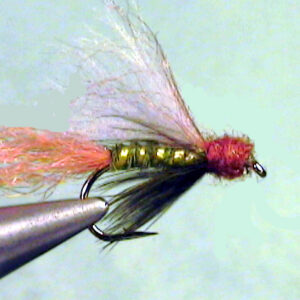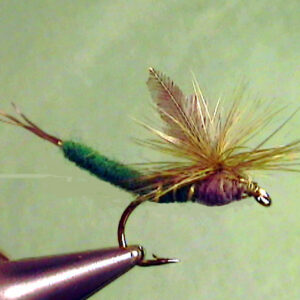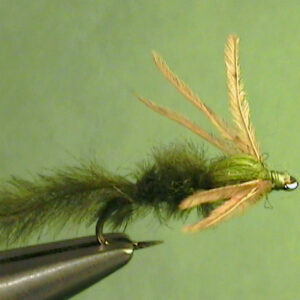Hook Size: 10/12
can also occur early in the morning. It’s usually not very concentrated; however, the trout
can become selective on them, so we think it is a good idea to have some flies with you
just in case. We have found them on the water on several occasions early in the morning
and we have taken trout on our Perfect Fly Western Green Drake Spinner.The Western Green Drake spinner fall sometimes occurs during the night. I have fished
the spinner fall just before dark on some streams but others it failed to develop during
daylight hours. In the early mornings, you will often find the Green Drake spinners
congregated in eddies and pockets during the hatch. I have read and overheard other
anglers say that the Green Drake spinner fall actually occurs early in the mornings. .We
have yet to verify that but as mentioned, we have found them on the water in the early
mornings.
Even in the late summer months when the last of the Green Drakes hatch in the Lamar
Valley section of Yellowstone National Park, we have not encountered a spinner fall
underway. We do normally leave before dark and they could be the reason. During
inclement weather at many other western streams during the late season after the
weather has turns cool, the spinner fall may not occur until the early mornings. So you
may keep that in mind.
Presentation:
Of course, you can always fish during the evening. We have not tried that during the
Green Drake spinner fall but I have heard others say they have been successful doing
just that. If you happen to find trout feeding on the spinners that have congregated at the
ends of long runs, heads of pools, eddies or pockets, then I would certainly suggest that
you try our spent imitation of the Western Green Drake Spinners.
Use an upstream, or an up and across dead-drift, presentation in faster moving, rough
water. In smooth, slick water use a down or down and across stream presentation. It is
usually not necessary to use long, light leaders due to the low light level that they
normally fall under.



